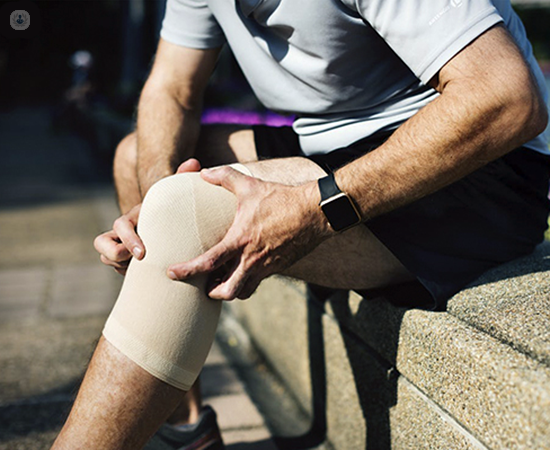Patellar instability: causes, diagnosis, treatment, and more
Written by:Patellar instability occurs when your kneecap moves outside of its groove. It is a common problem faced by orthopaedic surgeons and affects mostly young and active people, with adult athletes at higher risk.
We asked Mr Gurudatt Sisodia, a top consultant orthopaedic surgeon specialising in knee surgery, to give our readers an overview of how this knee problem arises, the signs and symptoms, diagnostic tests and available treatments.

What is patellar instability?
Patellar instability is a condition of the knee that’s characterised by recurrent dislocations or subluxation (partial dislocation) of the kneecap (patella).
The patella normally sits in a groove (trochlea) at the end of the thigh bone (femur) and moves up and down in the groove during flexion and extension of the knee. But in cases of instability, the patella can move outside the groove.
What causes patellar instability?
There are several different causes and risk factors for patella instability including:
- Trauma – a direct blow to the patella or an awkward fall can cause dislocation
- Malalignment – ‘knock knee’ (valgus) deformity or rotational deformity can predispose the patella to instability as the pull of the quadriceps tendon, which attaches at the top of the patella, deviates the patella to the lateral (outer) side where it’s more likely to dislocate
- Dysplasia – a shallow, flat or even dome-shaped trochlea means the local anatomy may not favour normal tracking of the patella
- Patella alta – this is a high-riding patella and for some patients, it means the patella engages in the trochlea groove through only a part of the knee’s range of motion
- Hypermobility – some people may have excessive laxity in their ligaments and soft tissues which can predispose to the instability of various joints, including involvement of the patella
What are the signs and symptoms of patellar instability?
For most patients, their first patella dislocation is a very traumatic event associated with a sudden and severe pain at the knee, a palpable clunk, the inability to walk/weight bear and a sensation that something has moved out of place. A visible deformity may be apparent and swelling often develops.
In cases of recurrent instability, the patella may move in and out of the joint quickly with certain knee movements or positions and can be associated with pain that’s less intense than the very first episode. There may also be a buckling or locking sensation when walking, or there may be more persistent episodes of pain underneath the patella especially when the knee is loaded in flexion.
How do you diagnose patellar Instability?
Patellar instability should be diagnosed by an experienced clinician who takes into account the patient’s medical history and findings on clinical examination.
Investigations in the form of X-rays and an MRI scan are useful as they serve to identify potential underlying risk factors and associated injuries such as cartilage damage, fracture or ligament rupture. Imaging also helps the clinician to tailor treatment options appropriate to individual patient requirements.
How is patellar instability treated?
Activity modification and physiotherapy, in the form of quadriceps (thigh muscles) strengthening exercises, are usually the first line of treatment in cases of recurrent instability. They can be augmented by taping or a stabilising sleeve to help keep the patella in its groove.
Treatment for recalcitrant cases despite physiotherapy depends on the underlying cause(s) and any associated injury. Soft tissue procedures like the reconstruction of the MPFL (medial patella-femoral ligament) – the natural check reign for the patella – may be indicated if ruptured. Surgical release of tight structures lateral to the patella can sometimes be appropriate.
Bony procedures, such as a tibial tubercle osteotomy - which involves cutting then resetting a block of bone to which the patella tendon attaches – can help improve patella tracking for cases of malalignment or patella alta. Rarely, a trochleoplasty is indicated in cases of severe dysplasia and involves surgical deepening of the trochlea groove.
For later forms of patella instability where the cartilage has been chronically damaged, patella-femoral joint replacement surgery may be a suitable option.
If you experiencing patella instability and would like help from an expert orthopaedic surgeon, you can book an appointment with Mr Gurudatt Sisodia on his Top Doctors profile.


